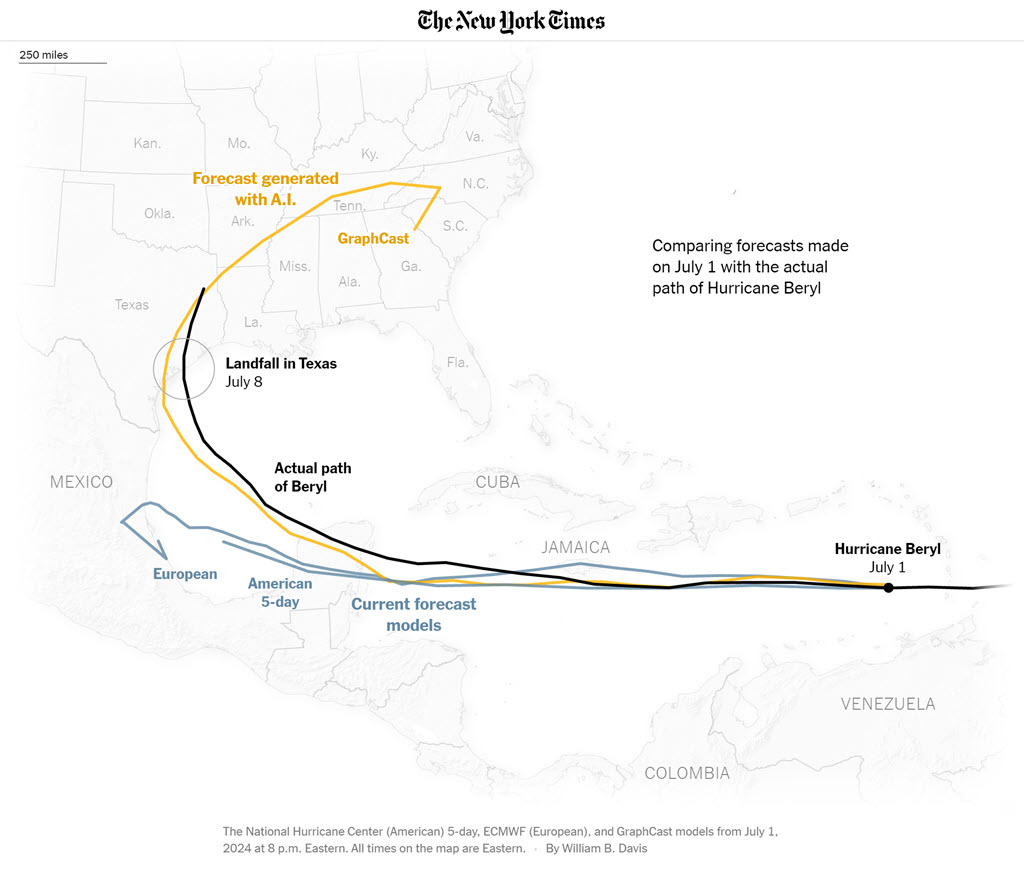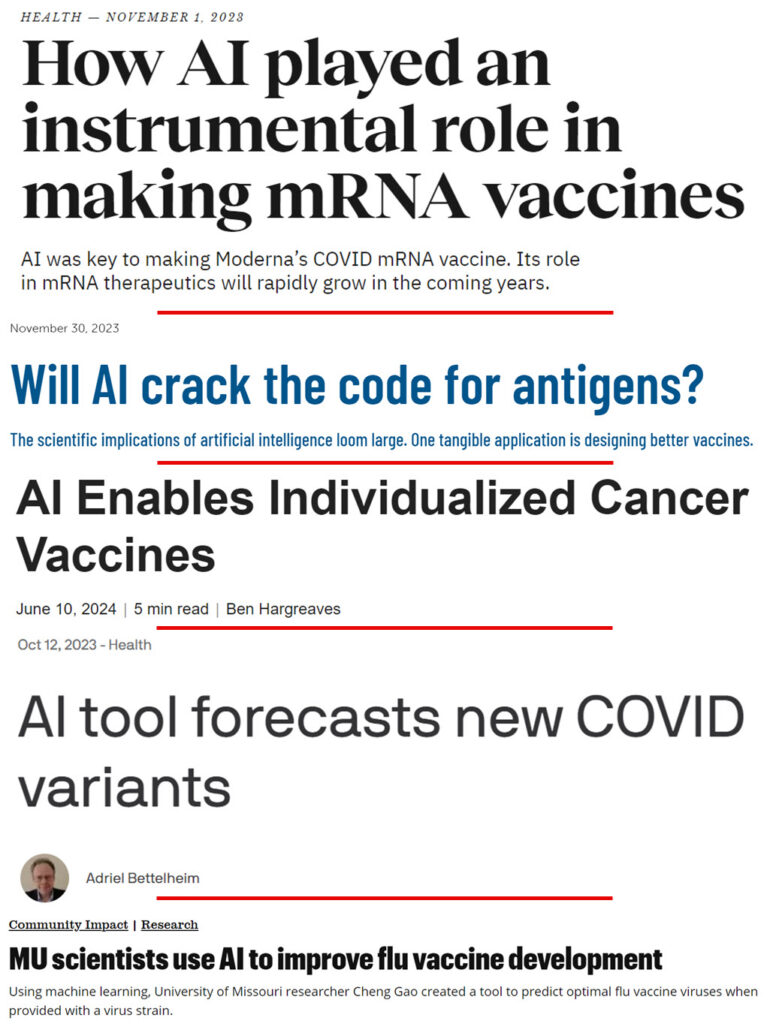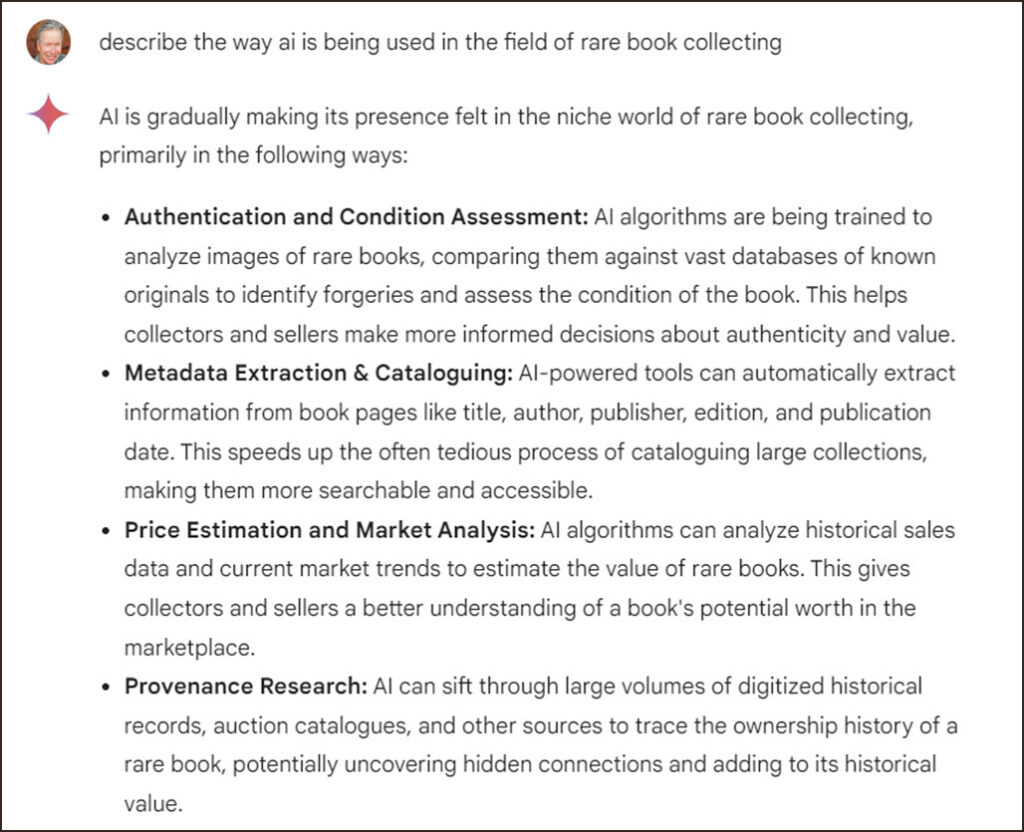
AI is improving apps and services that we use every day, but that’s not the whole story. There are more important developments powered by AI going on now behind the scenes.
I’ve got two examples for you – weather forecasting and virus research – but it will make more sense if you know a little bit more about what in the world “artificial intelligence” actually is and why it costs so much.
Don’t worry! I have absolutely no intention of describing AI accurately or in detail. I’m not competent to do that. This is just the vibes, man.
Background: why does AI cost so much?
In the ancient past – four or five years ago – there was a limit to what our biggest computers were ever going to be able to do. It was a lot! The cloud was moving around huge amounts of data and supercomputers were crunching away at hard problems.
But the improvements for the previous ten years or so were all about making the computers bigger and faster. Nothing wrong with that! Very cool. But it didn’t really raise the bar.
AI programming brought something brand new – a completely different way for the giant computers to manipulate data, the kind of unpredictable breakthrough that changes everything.
Don’t worry about how it works. Assume it’s magic. It is magic. It’s great magic.
There was, however, an unexpected side effect: not only were the AI computers able to work fast, researchers found that they kept getting better results as they poured more power into the computers. The computers aren’t just getting bigger and faster; when they make predictions, the predictions are more and more accurate. The output keeps improving in ways that are measurable and dramatic.
Thus the hundreds of billions of dollars of investments in data centers. There’s no end in sight. Or rather, there might be diminishing returns eventually, but that’s a long time from now.
Background: what does AI do?
There are two things that AI can do. (There are more than two things. This is simplified.)
AI can examine things created by humans – the entire contents of the internet, say – and then do those things in exactly the same way humans would. AI can write words, recognize objects, create art, write computer programs.
That’s a lot! It’s everything you’re familiar with that has an AI label.
There’s another thing AI can do.
AI looks at giant piles of data and finds patterns and makes predictions.
It’s called “Machine Learning.” It’s not really a separate process – it’s a big part of the reason AIs can act human. When an AI chatbot talks like a person, it’s because the AI has examined all the things written and spoken by humans ever and spotted patterns so it can predict what you want to hear from it.
But AI can also look at other kinds of data – almost any kind of data – and spot patterns and make predictions. And that’s so powerful that it is revolutionizing science, medicine, technology, manufacturing, insurance, transportation, retail, agriculture – just about everything.
I’ve got two examples that have been in the news recently.

AI weather forecasting
AI is being used to create faster and more accurate weather forecasts.
Weather is notoriously difficult to predict. We have massive datasets of historical weather data and massive amounts of new data flows in every second about every breath of wind and ocean current. Did you see the word “massive”? You have no idea. The world is a complex system.
We have supercomputers that crunch data constantly to generate forecasts. They do extraordinary work. Our forecasts are far more accurate than even a few years ago.
There are large economic effects from accurate forecasting. Private weather forecasting in the US was a $17 billion business in 2023. Businesses that might be affected by hurricanes or tornadoes pay huge subscription fees to be notified an hour or two early about possible events. Airlines depend on accurate forecasts for route planning, fuel efficiency, and passenger safety. Rockets – companies like SpaceX and government agencies like NASA rely heavily on precise weather assessments. Agriculture – accurate forecasts help farmers make informed decisions about planting, harvesting, irrigation, and pest control. Construction, insurance, energy companies – you get the idea.
Microsoft researchers have designed an AI-based weather forecasting program that is 5,000 times faster than the gold-standard weather supercomputers in Europe.
A Google-inspired AI-based program runs 40,000 times faster than the US Space Force supercomputers in charge of forecasting weather for NASA at Cape Canaveral. “A typical forecast takes anywhere between three and nine hours,” said a spokesperson. “Our forecast can run in about 10 seconds. This is a critical thing. You get sensor information coming every minute, and the bottleneck becomes the forecast itself.”
But there’s an additional crucial point. It’s not just faster. The NASA AI algorithm is also 50% more accurate for key metrics including wind, temperature and humidity. It can spot differences in smaller areas.
Look at the above picture. It shows the path of Hurricane Beryl as it headed for Mexico and the US. Reported by the New York Times:
“In early July, as Hurricane Beryl churned through the Caribbean, a top European weather agency predicted a range of final landfalls, warning that Mexico was most likely. The alert was based on global observations by planes, buoys and spacecraft, which room-size supercomputers then turned into forecasts.
“That same day, experts running artificial intelligence software on a much smaller computer predicted landfall in Texas. The forecast drew on nothing more than what the machine had previously learned about the planet’s atmosphere.”
The blue lines in the picture – the ones that veer off in the wrong direction – are the predictions from the US National Hurricane Center and the European weather agency.
The yellow line from the AI program accurately predicted the actual path of the hurricane over the next week, shown by the black line.
That is incredible. The entire world of weather forecasting is in upheaval, in a good way.
Google’s AI unit DeepMind showed off software last year that beat the forecasts by the top European agency across 90 percent of more than 1,300 atmospheric variables such as humidity and temperature. “Better yet, the DeepMind model could be run on a laptop and spit out a forecast in under a minute, while the conventional models require a giant supercomputer.”
It’s just the beginning. Meterologists were skeptical at first but now there’s an expectation that there are big changes ahead for the field.

AI vaccine development
AI is being used to accelerate the development of new medicines and vaccines.
There is a revolution underway in the field of medicine. AI tools are well suited for areas that require analysis of vast amounts of patient data, including disease diagnosis, drug discovery, and treatment personalization. AI-powered tools are streamlining administrative processes and assisting in surgical procedures.
Let’s use vaccines as an example.
AI is being used to predict the evolution of viruses. This information can be used to develop more effective vaccines and treatments for viral diseases. For example, AI has been used to predict new variants of COVID-19.
AI is being used to improve the selection of flu strains for annual vaccines. This can help to make flu vaccines more effective.
AI is being used to predict the structure and interactions of molecules. This information can be used to develop new drugs and therapies. For instance, AI can be used to predict how a drug will bind to a protein, which can help to design more effective drugs.
AI is being used to accelerate the development of new medicines and vaccines. For example, AI can be used to design proteins that can be used as vaccines or cancer treatments. AI can also be used to automate the process of testing different mRNA sequences, which can help to speed up the development of new mRNA vaccines. AI was key to making Moderna’s COVID mRNA vaccine.
I chose weather forecasting and vaccine development because I saw recent articles about advances in those fields. Want to do an interesting exercise? Go to Google Gemini and do your own experiment. Type in “Describe how AI is being used in the field of (fill in the blank) in layman’s terms.” Choose something you’re interested in. I’ll bet the answer will surprise you.
I did that just now for rare book collecting, because I’m not just a nerd, I’m a nerd with a book collection. I’ll paste in the answer because, wow. Do not doubt that the world is changing!

